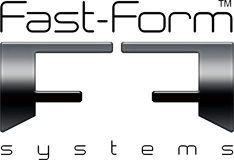Falsework – Everything You Need To Know
01.10.2020
A common misconception is that Falsework and Formwork are the same thing, however it’s important to understand that they serve entirely different roles. There are lots of different types of formwork – from wall formwork, to column formwork and panel formwork – the main purpose of which is to mould, by holding the concrete in place while it hardens and forms the desired shape. Falsework, on the other hand, is designed to support vertical loads for another structure (until it can support itself). The most common uses of it are to support girders or arch bridges.
Types of Falsework
There are various types of falsework available on the market, but none like the Fast-Form System. Traditional systems use aluminium frames and leg assembly, some use props made of steel and others use wood as the main base. Not only do these traditional types take a long time to erect, but they also require the hire of expensive cranes and skilled workers.
Our falsework system is made from recycled materials and is much stronger and safer than timber-based products. It also provides greater slab thickness than a panel-based system, making the falsework much stronger and sturdier – both of which are extremely important properties when it comes to structural support.
Centring Falsework
Centring is an architectural term that is often used to describe the temporary support of arches during construction. It is a form of falsework that is used to support an arch or barrel vault, before the masonry structure is built. Arches and domes are very unstable during construction, so falsework is needed in order to initially secure the arch.
Used With Old & New
Falsework doesn’t just have to be used with new construction projects and builds, it can also support existing structures too. Whether that be a building which has been structurally damaged, half-built, or even for overloaded structures which need support. Older buildings often require falsework as they are being repaired, to ensure that the environment is still safe as the building work is carried out.
Multiple Uses of falsework
Falsework provides the necessary structural support so that you are able to continue with a build in a safe way, however, designing the correct system for your individual requirements can be challenging. That’s why our in-house designers and expert structural engineers are on hand to help.
Together, we can create a unique system that is not only suitable for your specific job but is also going to withstand the site conditions that you are working with. For more information on our bespoke falsework, please contact us today and our team will be more than happy to assist you.



